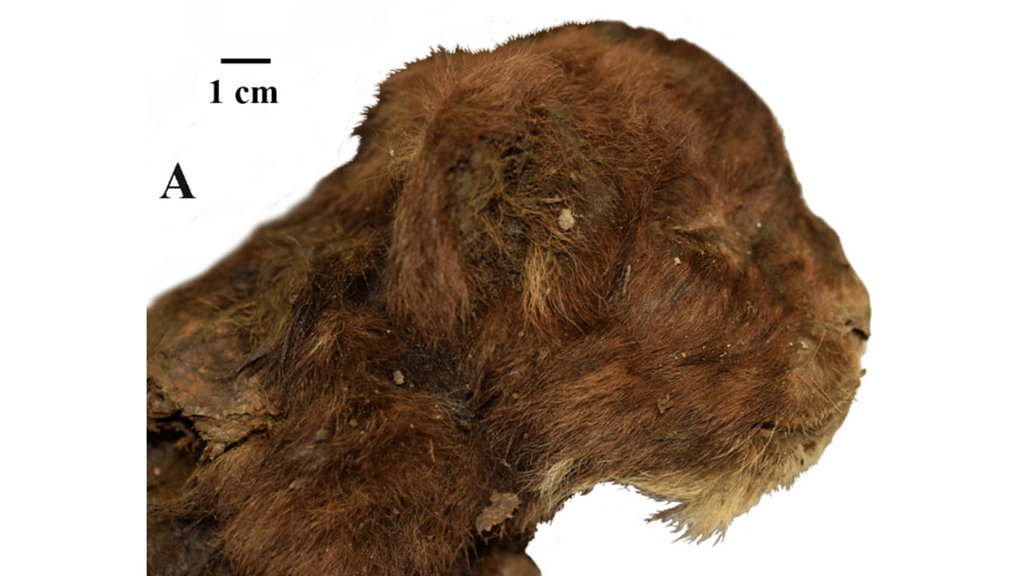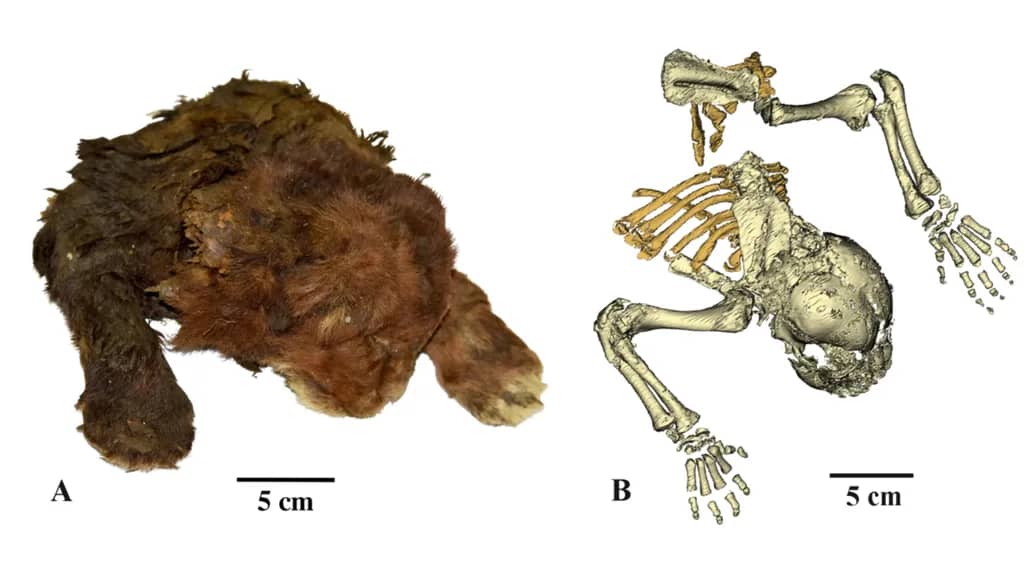Researchers have analyzed mummified remains pulled from Siberia’s permafrost in 2020 and determined they belong to a 3-week-old saber-toothed kitten that died at least 35,000 years ago.

The mummified of a newborn saber-toothed cat that perished at least 35,000 years ago has been extracted by researchers from the permafrost of Siberia, and the kitten’s whiskers and claws are still there.
The kitten was just three weeks old when it passed away in what is now the northern Sakha Republic, better known as Yakutia, in Russia, according to a recent investigation of its remarkably preserved head and upper body. Along with the corpse, scientists discovered pelvic bones, a femur, and shin bones wrapped in an ice block. It is unknown what caused the animal to die.
According to research revealed Thursday (Nov. 14) in the journal Scientific Reports, it is quite uncommon to find well-preserved bones of saber-toothed cats, and this one is from the species Homotherium latidens. During the Pliocene (5.3 million to 2.6 million years ago) and early Pleistocene (2.6 million to 11,700 years ago) periods, Saber-toothed cats of the extinct genus Homotherium were found all over the world. However, there is evidence that their numbers declined as the Pleistocene (also known as the last ice age) came to an end.
The Middle Pleistocene [770,000–126,000 years ago] was the most recent known occurrence of Homotherium in Eurasia, according to the study’s authors. The mummies of H. latidens found in Yakutia significantly broaden our knowledge of the genus’s range and demonstrate that it existed in Asia during the Late Pleistocene [126,000–11,700 years ago].
According to the findings, the tiny, deep-frozen mummy demonstrates that H. latidens was well-suited to ice age circumstances. When the corpse was compared to that of a contemporary 3-week-old lion (Panthera Leo) cub, the researchers discovered that the saber-toothed kitten lacked carpal pads, which are pads on the wrist joint that modern cats use as shock absorbers, and had broader paws. Saber-toothed cats were able to move easily in the snow because of their modifications, while the mummy’s thick, soft hair protected the predators from the bitter cold.

Saber-toothed cats were found to have a bigger neck, a larger jaw, smaller ears, longer forelimbs, and darker fur when compared to lions. Although the remains of adult Holotherium have previously shown that these saber-toothed cats had elongated limbs and small bodies, the latest study demonstrates that these characteristics were already evident at 3 weeks of life.
The kitty was buried in permafrost for at least 35,000 years, and potentially 37,000 years, according to radiocarbon analysis of the mummy’s fur. Researchers have been able to describe for the first time the physical traits of H. latidens, such as the distribution of muscle mass, the shape of the muzzle, and the texture of the fur, thanks to the carcass, which was removed from the banks of the Badyarikha River in Yakutia in 2020.
It’s amazing that the mummy still has whiskers (also known as vibrissae) and keen claws. “The mummy eyelashes were not preserved,” the study’s researchers pointed out.
The most notable characteristics of the mummy and the species to which it belongs were determined by the new study, but the authors are already working on a new publication. “The anatomical features of the find will be discussed in more detail in a subsequent paper,” they said.